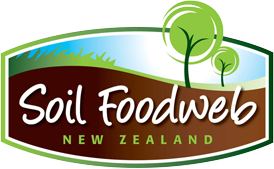
About Our Microbial Assessments
Soil Foodweb New Zealand has a unique ‘direct count’ system of assessing soils biological components.
Our recommendation is that you test your soils microbial balances on an annual basis as you would do for your soils’ mineral content. If there are concerns regarding production or soil condition during the year it may be necessary to conduct several microbial assessments over the growing period. This will permit you to take remedial action if required. There are many options, so contact the lab to find out what is suitable for your situation.
Total Fungi
As with bacteria, the optimal range varies according to the crop, climate and season.
If the Total fungal biomass is below range, fungal inocular or foods may be required. Fungal foods: humate products, whole fish products and seaweeds. Low total fungi may also indicate low diversity, and lack of disease suppression.
Active Bacteria
Only that percentage of the bacteria which are currently aerobically metabolizing organic compounds are directly nourishing the plants; if this portion is too low, bacterial foods may be required to stimulate the dormant population. This percentage varies from season to season. The numbers tend to be lower in the winter and mid summer.
Total Bacteria
The optimal bacterial biomass in the soil varies according to crop, climate and season. If the Total Bacteria is not within this range, bacterial inoculum or foods may be required. Bacterial foods: Sugars, molasses and seaweeds. Incorrect bacterial biomass could also indicate a bacterial bloom (with very high numbers) or toxins present (with very low numbers).
Active Fungi
As with bacteria, only those fungi which are currently growing and metabolizing are directly nourishing the plants, if this portion is too low, fungal foods may be required to stimulate the dormant population. This percentage also varies from season to season. The numbers tend to be lower in the winter and mid summer.
Protozoa
These large single-celled organisms feed upon bacteria and excrete nitrogen in the plant available form of ammonium, so are essential to healthy plant growth. One morphological group, the Ciliates, feed preferentially on anaerobic bacteria, so a high ciliate population may indicate anaerobic conditions which need to be addressed.
Mycorrhizal Fungi
Most plants in farming and horticulture tend toward Endo Mycorrhiza. Over 90% of all plants on Earth form symbiotic relationships with Mycorrhizal fungi. These fungi increase the nutrient and water uptake capacity of the plant, boost its immune system and protect it against pathogens. We determine what percentage of your roots are colonised and also look for signs of disease and other damage.
Microbial assessments on Soil, Compost & Soil Inoculums
The results from the microbial assessments will enable the farmer to:
Assess their soils’ starting point prior to embarking on the method of biological farming
Determine what foods or inoculums are required to maintain or correct the microbial balances.
Ascertain just how effective their biological inputs have been over the past year.
Help them calculate what impact their grazing rotation is having on the soils condition.
Ascertain what damage has been caused by pest and disease treatment – especially important in grape and pip and stone fruit production.
As soon as the tests enter our system you will receive a confirmation by email supplying you with the Soil Foodweb sample number for your samples and letting you know that you should have the results back within 8 working days.
The microbial assessments report is a 1-2 page document with comprehensive description of what is happening with each assay. You are also invited to phone the lab for a complimentary consultation/interpretation.
These results can indicate your total levels of bacteria and fungi; the percentage of these organisms that are working and doing the job, and if this is sufficient for the season; the diversity of fungi and if it is generally beneficial; nutrient cycling capabilities, whether or not the soil is anaerobic due to compaction etc; supply information on mycorrhizal colonisation in the roots; fungal-bacterial ratios; trends for the coming months, ie more bacterial or more fungal.
Looking closely at your soil
A busy slide with lots of Protozoa. Large fast ones are ciliates and two amoeba on right hand side slowly making their way across. Some flagellates as well. These are an important part of the food web as they prey on bacteria releasing nutrients into the system for plants to get a chance to uptake them.
